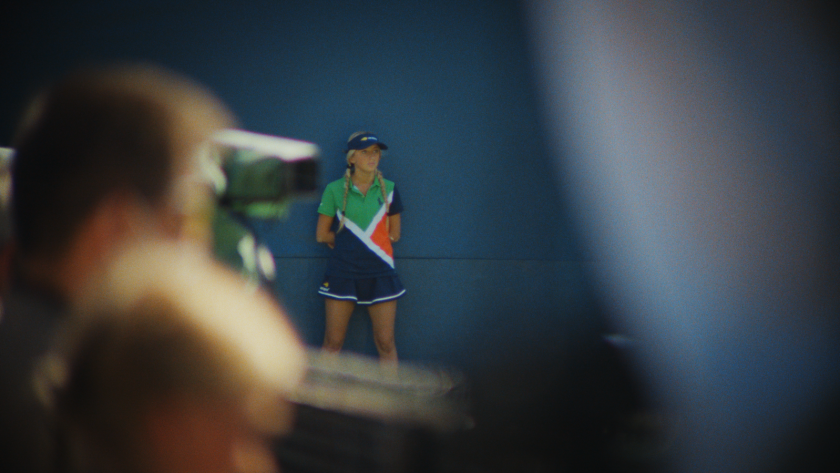A few weeks out from the US Open, the tournament’s major storylines are coming into relief: Carlos Alcaraz and Iga Swiatek hunting for back-to-back championships, whiz kids like Coco Gauff and Holger Rune trying to make the leap, New York City staying up all night to cheer raucously for really good tennis. But the actual tennis relies on a unique and frequently overlooked ecosystem. The ball people—tournament employees who retrieve and supply the balls for players and officials between points, running all over the court in technical, mesmerizing patterns—might not drive attendance in Queens. But they’ve got fascinating stories all their own—a few of which come to life in Ball People, a new short documentary presented by GQ Sports.
Scott Lazer, Ball People’s director, has been a tennis fan his whole life. He told GQ that in 2019, he was watching a Wimbledon match on TV and was completely enchanted by a move the ball crew executed. He immediately looked up how to become a ball person at a major tournament—and four years later, he made a film about the process. Ball People is a behind-the-scenes look at the ball crew tryouts for the US Open—an unusually democratic process, but one that ensures rigor and excellence on the sport’s biggest stage. “They are kind of responsible for the tempo of the game,” Lazer explained. “There is order, and athleticism, and tennis IQ required to do it. That’s what interested me. It’s in that neat section of not insignificant, but something that’s normally on the margins.”
The 13-minute film highlights several applicants of different gender, age, and background. Lazer tells the story of several teenagers and young adults—and also a 60-year-old man—who took part in the thorough three-day tryout. (The minimum age to be a ball person is 14, but there is no cap in the other direction.) Lazer found that prospective ball people mirrored the larger cultural shifts happening in tennis.
“The sport is becoming more diverse,” he said. “The average age is dropping; there’s a lot of young people playing. There’s real cultural moments happening in tennis. In the last year in particular, it really felt like it was having an impact. It’s no longer just relegated to the country club. The ball people are an interesting pool of people who will continue being the watchers and players of tennis moving forward. You’re kind of seeing what the future of the sport will look like.”
There’s a good chance that, once you’ve seen the sneaky athleticism required to bend down and pick up a rolling tennis ball while running at full speed, you’ll have a new appreciation for the folks who help make the sport go. “You can’t really go back to watching tennis the same way again,” Lazer said, laughing. “I’m not saying you’ll become obsessed with what the ball people are doing. But it is one of those things where once you see it, you can’t unsee it.”



